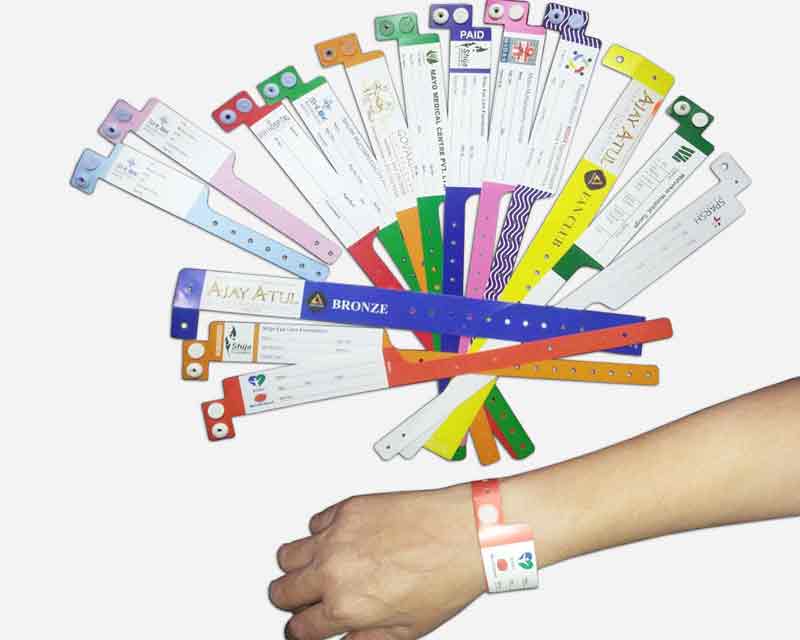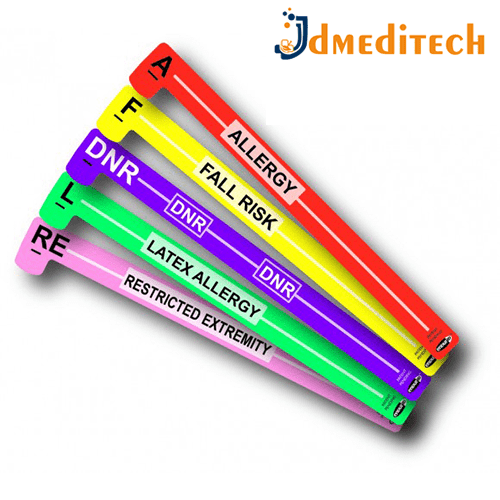Exploring the Advantages of a Patient Identification Band in Preventing Medical Errors
Exploring the Advantages of a Patient Identification Band in Preventing Medical Errors
Blog Article
Checking Out the Different Sorts Of Patient Identification Band Utilized in Medical Facilities
In the elaborate world of medical care, the important function of Patient Identification bands frequently goes undetected. These bands, varying from basic paper wristbands to advanced RFID bands, create the backbone of Patient security procedures, making sure precision in Patient Identification. The huge variety of these bands, each with its unique benefits and constraints, is commonly overlooked. As we browse through this topic, one might acquire understanding into the subtle intricacies and vital importance of such bands in medical centers.
Comprehending the Significance of Patient Identification Bands
While they might appear like mere devices, Patient Identification bands play a crucial duty in medical centers. These bands offer as an important device for validating Patient identity, avoiding clinical mistakes related to misidentification. Patient Identification bands additionally aid in simplifying administrative jobs, making sure precise record-keeping and billing.
Traditional Paper Wristbands: Their Use and Limitations
Typical paper wristbands have actually been a staple in Patient Identification across various clinical facilities. While their usage is prevalent, they nurture certain constraints that may influence their efficiency in Patient monitoring. This section will certainly concentrate on the range of their application and the intrinsic disadvantages linked with their use.
Paper Wristbands: Usage Extent
In the world of Patient Identification, paper wristbands have long held an essential duty. These bands are typically made use of in outpatient settings, where the Patient's stay is momentary. The wristbands consist of important details such as the Patient's name, day of birth, and a distinct Identification number. This simple, yet effective system, allows physician to swiftly and properly identify people, guaranteeing the proper therapy is administered. Paper wristbands are additionally used in emergency scenarios, where quick Identification is extremely important. Their use encompasses events like blood donation drives and mass vaccination programs, better emphasizing their adaptability. Despite improvements in modern technology, the humble paper wristband stays a reliable and affordable solution for Patient Identification in different healthcare scenarios.
Limitations of Paper Wristbands
Regardless of their prevalent use, paper wristbands are not without their downsides. Their physical durability is just one of the substantial limitations. Exposure to water, sweat, or harsh handling can provide them unreadable or perhaps trigger them to break down. On top of that, paper wristbands typically lack the technological capabilities of more modern choices, such as barcoding or RFID chips, restricting their performance to simply showing composed info. The failure to update or modify the data on the wristband is an additional imperfection. If the info is handwritten, legibility can be compromised, leading to potential misidentification. Lastly, paper wristbands can trigger discomfort or skin irritation to some individuals, specifically when put on for extensive durations.
Barcoded Wristbands: Innovations in Patient Identification
While Patient Identification has actually long been an important facet of medical care, the advent of barcoded wristbands represents a substantial jump onward. These bands take advantage of the simplicity of barcoding technology, enabling for Patient information to be swiftly checked and accessed. They improve the speed and accuracy of Patient Identification, lowering the threat of clinical errors related to misidentification.
Superhigh Frequency Identification (RFID) Bands: an Action In The Direction Of Futuristic Health Care
The development of Patient Identification bands has actually over here brought concerning the appearance of Superhigh frequency Identification (RFID) Bands (patient identification band). These innovative tools existing essential advantages for healthcare centers, using a much more efficient and technologically progressed ways of Patient Identification. The implementation of RFID in medical care is a considerable step towards a much more futuristic strategy to Patient monitoring and security
Comprehending RFID Bands

RFID Bands: Key Advantages
Welcoming a future where technology and medical care merge, superhigh frequency Identification bands offer numerous crucial advantages. Largely, these bands boost Patient safety by giving accurate, instantaneous Identification, thus reducing medical errors. RFID bands can store a huge quantity of Patient information, including clinical history and allergic reactions, enabling customized care. They additionally streamline administrative tasks, as the automated information entrance article source replaces hands-on procedures, improving efficiency and lowering documents. RFID bands supply real-time monitoring of individuals, crucial in risky environments such as surgery or intensive care. These bands are resilient and resistant to environmental variables, making certain regular performance. On the whole, RFID bands stand for a significant development in Patient Identification modern technology, profiting both clients and doctor.
Applying RFID in Health Care
As we tip into a technically innovative age, the implementation of RFID bands in healthcare ends up being progressively essential. These bands provide a smooth way to track and identify clients, guaranteeing their safety and boosting efficiency in therapy procedures. RFID bands offer numerous benefits over standard Identification methods. They can keep a huge amount of information, consisting of the Patient's clinical history and treatment strategies, which can be quickly accessed by medical care companies. This data assists physicians make notified choices regarding the Patient's treatment plan. RFID bands decrease clinical mistakes by supplying precise Patient Identification, which is vital in protecting against misdiagnosis or wrong medication administration. Therefore, the implementation of RFID bands is a considerable action in the direction of boosting Patient security and medical care delivery.

Color-Coded Wristbands: Helping in Quick and Accurate Diagnosis
In the bustling setting of a medical center, color-coded wristbands have actually arised as important tools for swift and exact Identification of a person's clinical condition. These wristbands, used by patients, lug details shades that correspond to different medical conditions or statuses. This system is developed to offer immediate aesthetic cues to healthcare companies, enhancing Patient security and care high quality.
Approaches for Effective Application and Management of Patient ID Bands
Achieving optimal usage of Patient Identification bands requires a well-structured technique for their execution and administration. Patient education is additionally important; patients have to understand the objective of the bands and the need for their consistent wear. It's important to have a back-up strategy in place, such as barcode scanning or biometrics, to make certain that Patient Identification is never ever compromised.
Final thought
Patient Identification bands find more are vital in medical centers to make sure safety and security and accuracy. Effective implementation and administration of these bands can considerably decrease medical mistakes, improve effectiveness, and improve general Patient care.
These bands, differing from straightforward paper wristbands to advanced RFID bands, create the foundation of Patient safety and security protocols, guaranteeing accuracy in Patient Identification.The advancement of Patient Identification bands has actually brought regarding the development of Radio Frequency Identification (RFID) Bands. Generally, RFID bands stand for a significant advancement in Patient Identification innovation, profiting both clients and medical care carriers.
RFID bands decrease medical mistakes by giving precise Patient Identification, which is critical in protecting against misdiagnosis or incorrect medication management. Patient education and learning is additionally essential; patients should comprehend the purpose of the bands and the demand for their consistent wear.
Report this page